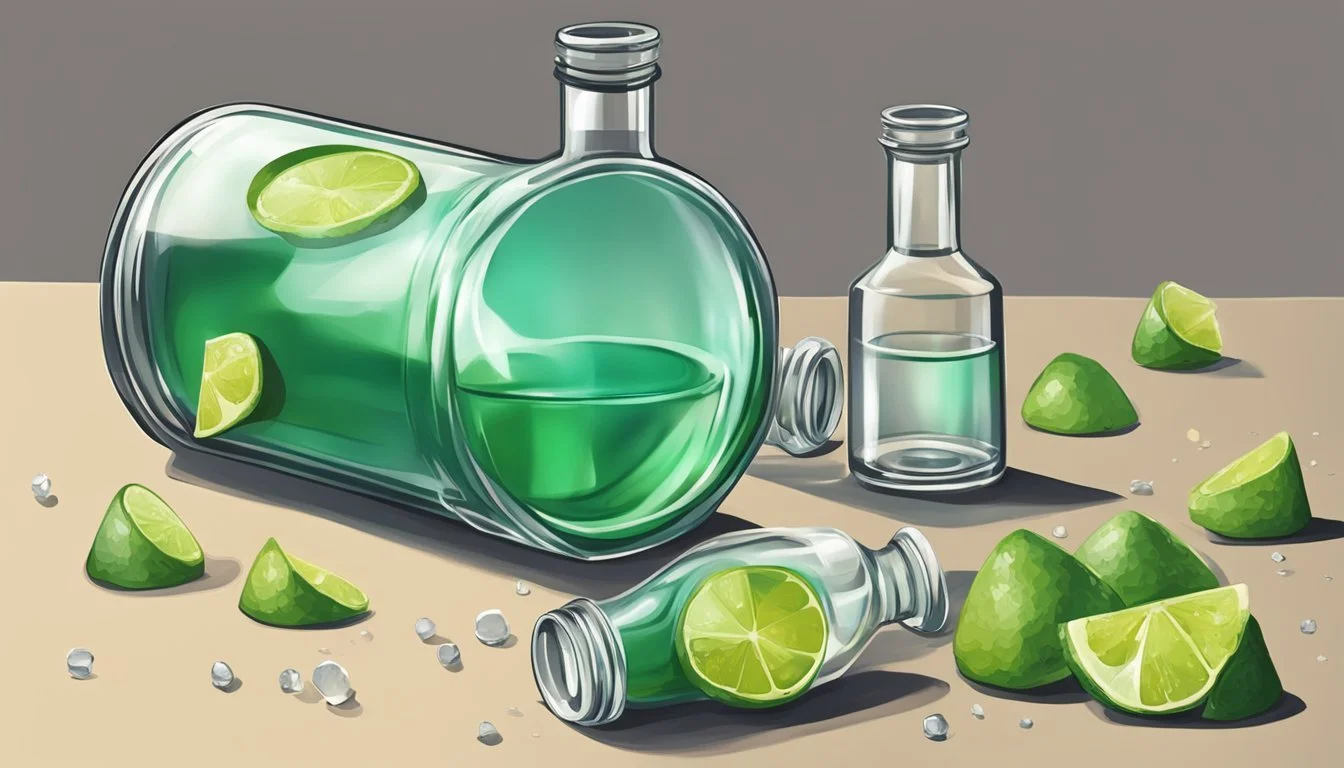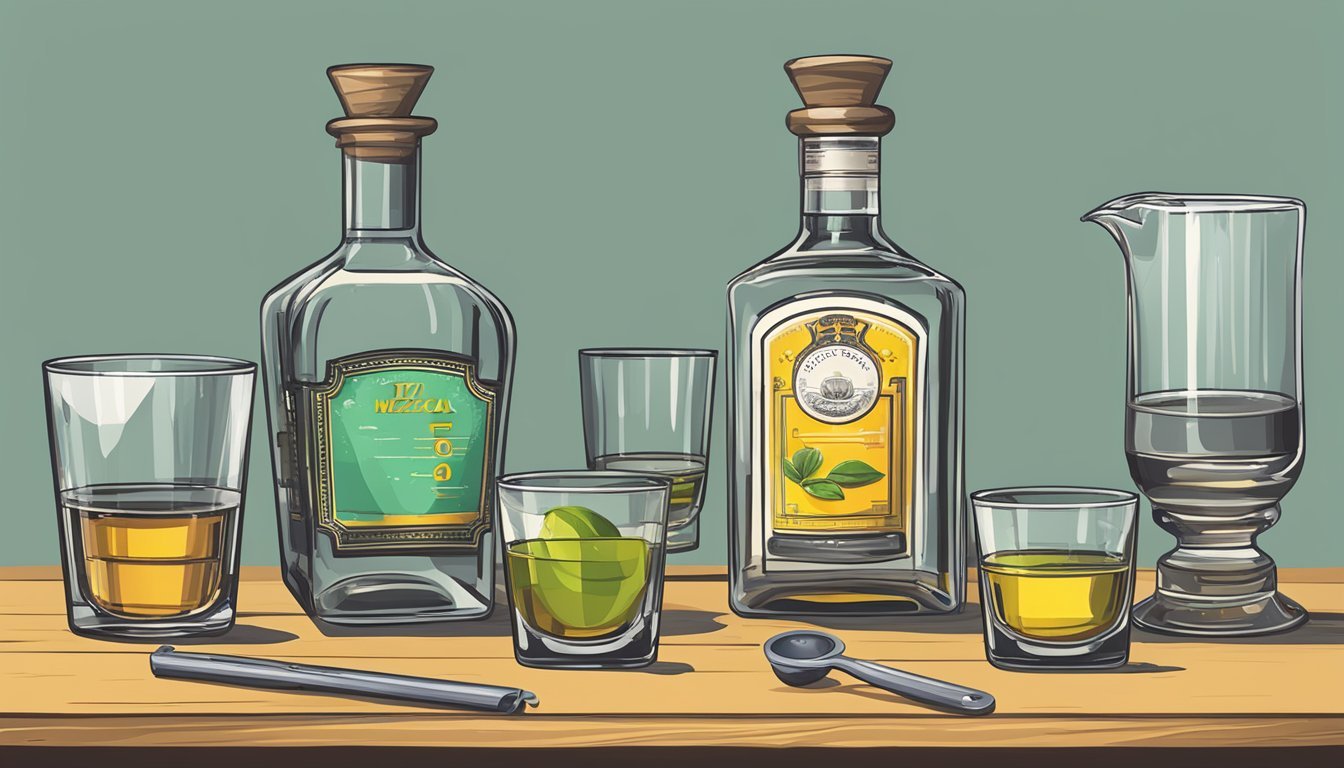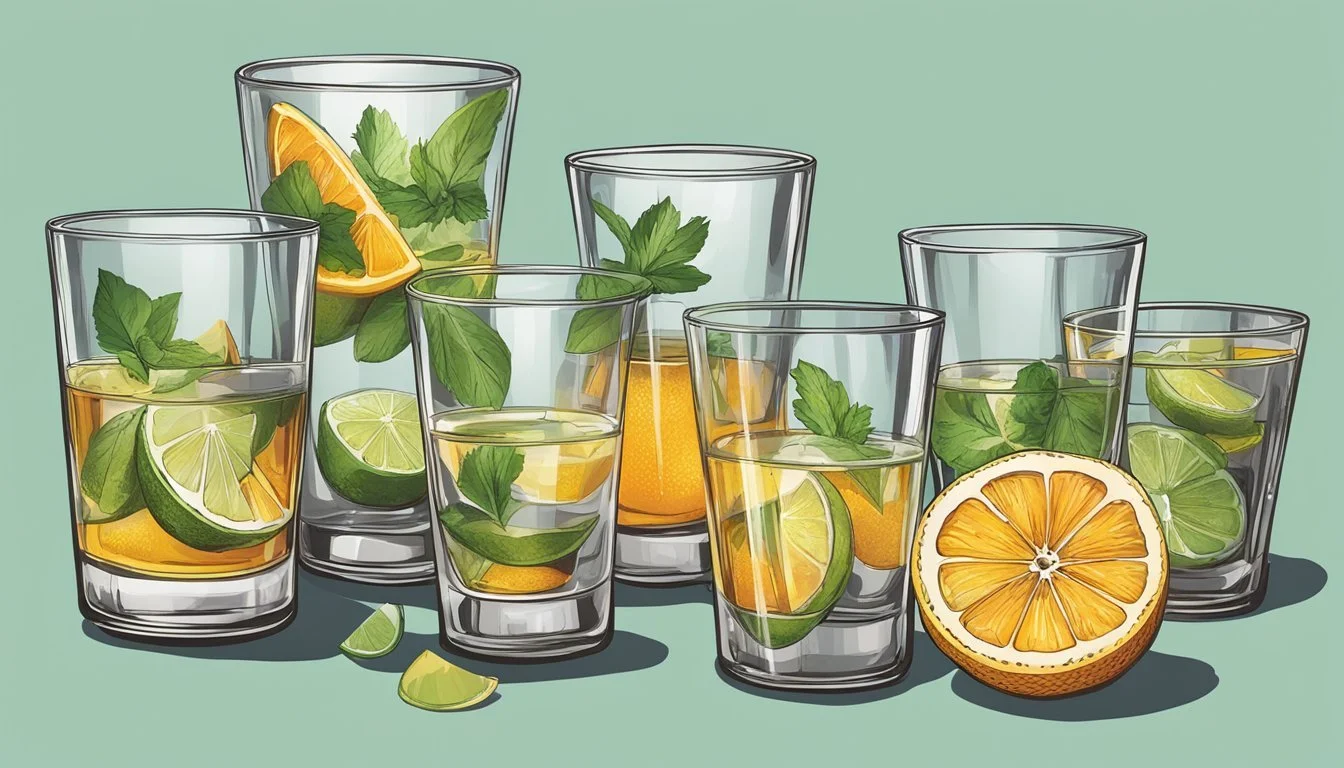How Many Servings of Mezcal Is Too Much
Understanding Safe Consumption Limits
Sipping mezcal, a traditional Mexican spirit crafted from agave, can be an enjoyable ritual, reflecting the rich cultural heritage of Oaxaca. While its unique flavors and artisanal production draw enthusiasts from around the world, it's important to understand how much is just enough. Mezcal is known for its potency, often boasting higher alcohol content than many other spirits. Experts generally recommend limiting daily consumption to one or two servings to avoid overindulgence.
Drinking mezcal responsibly is about more than just counting shots; it’s about savoring the experience. Enthusiasts often enjoy mezcal neat, in half sips, accompanied by slices of orange or pineapple sprinkled with spices like Tajin. This practice not only enhances the tasting experience but also encourages moderation. Mezcal’s complexity warrants a slow, mindful approach, which naturally limits the number of servings.
It's also crucial to be aware of how mezcal affects individual tolerance levels. Factors such as body weight, metabolism, and overall alcohol consumption habits play a role in determining how much mezcal is too much for each person. Keeping these factors in mind ensures that the enjoyment of this storied agave spirit remains a pleasurable and responsible act.
Understanding Mezcal
Mezcal, an agave-based spirit, originates from specific Mexican regions and is deeply rooted in cultural traditions. This section explores mezcal's distinctive qualities, historical significance, production methods, and regional varieties.
What Is Mezcal?
Mezcal is a distilled alcoholic beverage made from the heart of the agave plant, known as the piña. Notably, it can be made from various species of agave, unlike tequila, which is restricted to the blue weber agave. Mezcal's smoky flavor arises from roasting agave piñas in underground pits. Varieties like joven, espadín, and tepeztate are common, with mezcal often consumed straight, sometimes with garnishes like oranges or worm salt.
The History of Mezcal
The history of mezcal dates back to the 16th century, when Spanish conquistadors brought distillation techniques to Mexico. Initially, indigenous people fermented agave sap, but the introduction of distillation created what we now recognize as mezcal. Historical records show production spreading across regions such as Oaxaca, Guerrero, and Durango. The name "mezcal" comes from the Nahuatl word "mexcalli," meaning cooked agave.
Traditional Mezcal Production
Traditional mezcal production begins with harvesting agave plants, often wild varieties. After harvesting, the piñas are roasted in earthen pits, imparting a unique smokiness. The roasted agave is then crushed, traditionally using a large stone wheel called a tahona. The crushed agave is fermented and distilled, typically by native mezcal producers known as mezcaleros. Regions with specific production techniques include Real Minero in Oaxaca and Rey Campero.
Agave Varieties and Regions
Mezcal can be made from various agave species, including espadín (a common cultivated variety) and wild species like tepeztate. Notable production regions include Oaxaca, Guerrero, Durango, and Zacatecas. Each region offers distinct terroir which influences the flavor and characteristics of the mezcal. For instance, Oaxaca's mezcal is renowned for its earthy and complex profile. Regulatory bodies such as the Consejo Regulador del Mezcal ensure that production standards are met across these regions.
Mezcal Consumption Guidelines
When enjoying mezcal, it's important to consider responsible drinking practices, understand the alcohol by volume (ABV), and recognize other factors that influence how much you should consume.
Responsible Drinking
Drinking mezcal responsibly means paying attention to how much you consume and how it affects you. A standard serving of mezcal is typically 1.5 ounces, often enjoyed neat in a copita. Sipping is preferred over taking shots to fully appreciate the earthy, smoky, and floral notes. Bartenders recommend enjoying mezcal slowly to savor the beverage, whether it's in a mezcal mule or a simple mezcal neat.
Responsible drinkers know their limits. In the U.S., moderation guidelines suggest up to one drink per day for women and two for men. Exceeding these amounts can lead to health issues and reduced enjoyment of mezcal's unique flavors.
Understanding ABV in Mezcal
The alcohol by volume (ABV) of mezcal typically ranges between 40% and 55%. It's a potent spirit, meaning it has a higher ABV compared to many other beverages. This high ABV contributes to mezcal’s intense flavors and strong effects.
Different types of mezcal, such as reposado and añejo, undergo varying periods of maturation, which can subtly alter the ABV and flavor profile. Drinkers should be aware of the ABV of each mezcal they consume to manage intake properly. For cocktails like a mezcal margarita or paloma, the ABV can be diluted but remains significant.
Factors Affecting Mezcal Servings
Several factors influence how many servings of mezcal may be too much. These include the drinker’s tolerance, weight, and overall health. Additionally, the production methods, such as traditional versus industrial, can affect the spirit's intensity and quality.
Mezcal is often made using sustainable practices, with methods like artisanal harvesting and utilizing natural fermentation processes. Variations in production can influence the final product’s strength and flavor. Drinkers should consider these differences and their own experience level when determining their consumption.
Mezcal can be enjoyed with ice, lime, or worm salt to enhance its vegetal and nutty tones, and those new to the spirit may prefer having it in a lower-ABV cocktail to start.
Health Considerations and Risks
Understanding how much mezcal is too much involves examining its alcohol content, the effects of overconsumption, and recognizing the signs that it’s time to stop drinking.
Alcohol Content and Health
Mezcal typically has an alcohol by volume (ABV) of 40-55%, making it a potent spirit. This high ABV means that even small amounts can significantly impact health. For many drinkers, moderation is key.
Excessive consumption of drinks with high ABV can lead to liver damage, cardiovascular issues, and other long-term health problems. Drinking mezcal neat, as often recommended, doesn't dilute its high alcohol content, increasing the risk of overconsumption.
The Effects of Overconsumption
Overconsumption of mezcal can lead to acute health risks such as alcohol poisoning, accidents, and impaired judgment. Immediate symptoms may include dizziness, nausea, and loss of coordination.
Long-term overconsumption increases risks for chronic diseases, including liver cirrhosis and mental health disorders. It's essential for drinkers to monitor their intake and be aware of the recommended daily limits for alcohol consumption to reduce these risks.
Recognizing Signs of Overconsumption
Recognizing when you’ve had too much mezcal is crucial for safety. Early signs include slurred speech, unsteady walking, and slowed reaction times. As intoxication progresses, more severe signs like vomiting, confusion, and loss of consciousness may occur.
Drinkers should watch for these indicators and stop consuming if they notice these signs in themselves or others. Staying hydrated and eating can also help manage alcohol effects. Monitoring these signs helps prevent severe health consequences.
Cultural Significance of Mezcal
Mezcal, deeply rooted in Mexican tradition, carries profound cultural symbolism. Its production and consumption reflect significant aspects of heritage, identity, and the craftsmanship of local mezcaleros.
Mezcal in Mexican Culture
Mezcal is more than just a spirit; it is an emblem of Mexican heritage. Particularly in Oaxaca, mezcal production is a family tradition passed down generations.
The process involves roasting agave hearts in earth pits, fermenting in wooden vats, and distilling in clay or copper stills. Beyond its method, mezcal is often enjoyed in rituals involving copitas or with worm salt.
Mezcal's cultural roots intertwine with ancient beverages like pulque, highlighting its deep historical connections. Celebrations often feature mezcal mules and innovative cocktails that blend tradition with modern taste.
Mezcal's Global Popularity
In recent years, mezcal has gained global popularity, enjoyed by bartenders and enthusiasts worldwide. Signature cocktails like the Naked & Famous showcase its versatility.
The spirit’s unique flavors and aromas appeal to those seeking exotic liquors beyond traditional wine and mainstream spirits. Brands like Derrumbes San Luis Potosí highlight regional variations, bringing attention to native agave species and production techniques.
This global reach enhances appreciation for mezcal's authenticity and the intricate craftsmanship behind each bottle. Streaming from its historic roots, mezcal now garners recognition in the finest bars and cultural hubs across continents.
The Craft of Mezcaleros
The meticulous craftsmanship of mezcaleros, or mezcal producers, defines this spirit. Using copper or clay stills, these artisans distill mezcal with precision, fostering a sustainable approach that respects the agave plant's lifecycle.
Many mezcaleros operate in regions like San Luis Potosí, focusing on sustainability and traditional methods. Varieties like Agave angustifolia (espadin) dominate production but species like Agave karwinskii (cuishe) offer unique flavors.
Mezcalera traditions honor the environment and cultural heritage, maintaining consistency and quality. Their expertise ensures mezcal's rich history and distinct identity persist, blending artisanal skill with cultural reverence.
The Art of Enjoying Mezcal
Discovering the rich flavors and the proper techniques to savor mezcal can enhance your experience with this unique spirit. Meant to be enjoyed rather than hastily consumed, mezcal offers a complex palate that deserves mindful sipping.
Tasting and Sipping Mezcal
To truly enjoy mezcal, sipping it neat is the recommended method. Experienced drinkers suggest taking small sips to fully appreciate its distinct earthy, smoky flavor. The palate should be allowed to explore the intricate notes, such as floral undertones and subtle sweet hints.
Avoid the common mistake of taking it as a shot; mezcal is not intended for rapid consumption. Instead, some opt to sip mezcal with slices of orange or pineapple, often dipped in spices like Tajin, or even alongside roasted grasshoppers. This method not only enhances the tasting experience but also honors traditional practices.
Popular Mezcal Cocktails
Mezcal shines in cocktails, bringing depth and complexity. Traditional options like the paloma replace tequila with mezcal for a delightful twist. Another popular choice is the mezcal mule, which combines mezcal with ginger beer and lime for a refreshing drink. The Naked & Famous is a contemporary favorite, blending mezcal with Aperol, yellow Chartreuse, and lime juice.
These beverages allow mezcal to be enjoyed in various settings, providing versatility for those who prefer mixed drinks. Choosing quality mixers can elevate the experience, allowing the unique flavors of mezcal to stand out without overpowering the cocktail.
Pairing Mezcal with Food
Pairing mezcal with food enhances both the beverage and the meal. It pairs well with grilled meats, such as carne asada, where the smokiness of the mezcal complements the char of the meat. Mezcal’s strong flavors also match well with spicy dishes, highlighting the Mexican culinary heritage.
Cheese lovers might enjoy it with aged cheeses, which can balance mezcal's robust profile. Fruits like citrus and tropical fruit slices offer a contrast, enhancing the sweeter notes of mezcal. The thoughtful pairing can transform any meal into a memorable experience, allowing the nuances of mezcal to shine.
Sustainable Practices and Future Outlook
Sustainable practices in mezcal production are crucial to preserving agave spirits' future and diversity. The commitment of mezcaleros in regions like Oaxaca plays a vital role in ensuring that mezcal remains an environmentally friendly product.
Mezcal and Sustainability
Mezcal production heavily relies on the agave plant, which can take several years to mature. Overharvesting has put significant pressure on wild agave varieties. Sustainability efforts focus on replanting agave, using eco-friendly production methods, and supporting small, local mezcaleros.
In Oaxaca and other mezcal-producing areas, initiatives promote the planting of diverse agave species. This practice helps maintain biodiversity and ensures that the local terroir continues to be respected. Sustainable mezcal production also involves using energy-efficient distillation practices, reducing waste, and recycling byproducts whenever possible.
The Future of Mezcal Production
The future of mezcal production appears promising, provided that sustainable methods continue to be implemented and expanded. Innovations in sustainable harvesting and production methods are a key focus. Communities are increasingly aware of the importance of preserving natural resources and are adopting more environmentally conscious practices.
Supporting family-owned mezcaleros and small-scale production helps maintain traditional methods while fostering economic growth in rural areas. Additionally, the rise of eco-friendly mezcal brands, such as those produced in Oaxaca, highlights the industry's shift towards environmentally responsible practices.
To safeguard the future of agave spirits, continuous investment in sustainable agriculture and ethical production practices is essential. Collaboration among scientists, local communities, and the agricultural sector can help create a resilient and sustainable mezcal industry.






